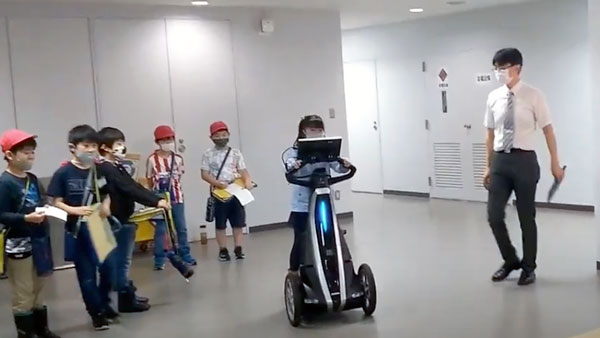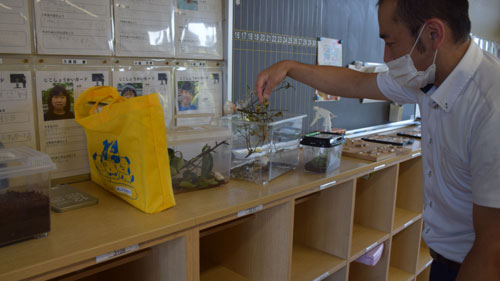2021.7.2
Students from Chiba University Elementary School Participate in Personal Mobility Test Ride
On July 2, 2021, CAIV held a test-drive event of the personal mobility ILY-Ai, a personal mobile robot co-developed by Associate Professor Kazuya Okawa and Aisin Corporation.
In 2020, Okawa completed a demonstration test at the AEON Mall, located in Makuhari New City. The improved version of the ILY-Ai is currently being used as an indoor transportation system at a commercial facility in Gifu Prefecture.


Now, during their integrated learning time, the children are learning about the process of observing, investigating, finding out about living things, and applying it for our life, based on their science subject. The teacher Mr. Meguri has set up space in the classroom to keep dragonfly nymph and swallowtail butterflies and says, “We are trying to let children learn not only from computer screens but also from real things.”
Once the test ride began, the children cheered as they saw the personal mobility device automatically return to its original position. The child who took a test ride said, “It was a little scary at first, but it was a lot of fun,” and she was eager to take notes afterward.
When asked the most ingenious part of the system, Okawa said, “I installed the sensor not horizontally, but diagonally upward. As moving the robot, we can collect information in a wide range of space efficiently.” About its fuel, he explained the vehicle's design, saying, “There are two batteries, one for driving and one for sensors, and it is crucial to make the sensor battery last longer to avoid danger.”
This is the second time that CAIV has held a tour for the elementary school students, and we will continue to provide such learning events for them.

